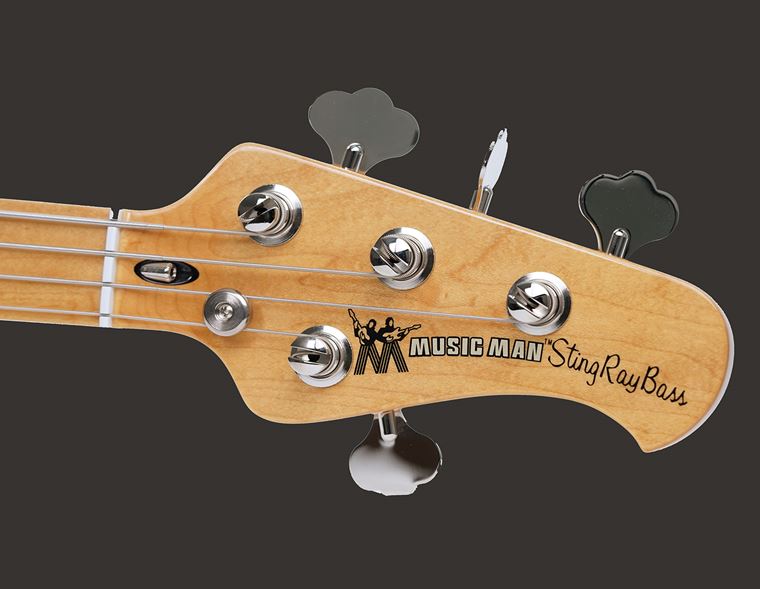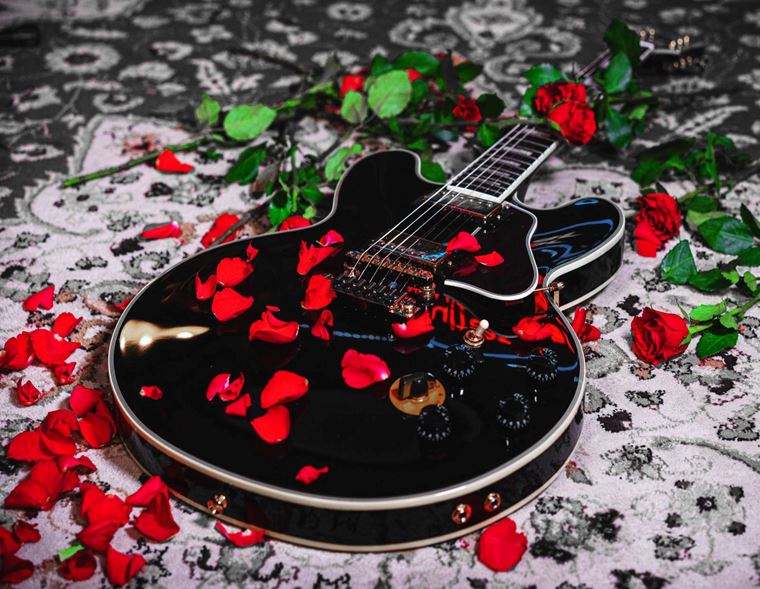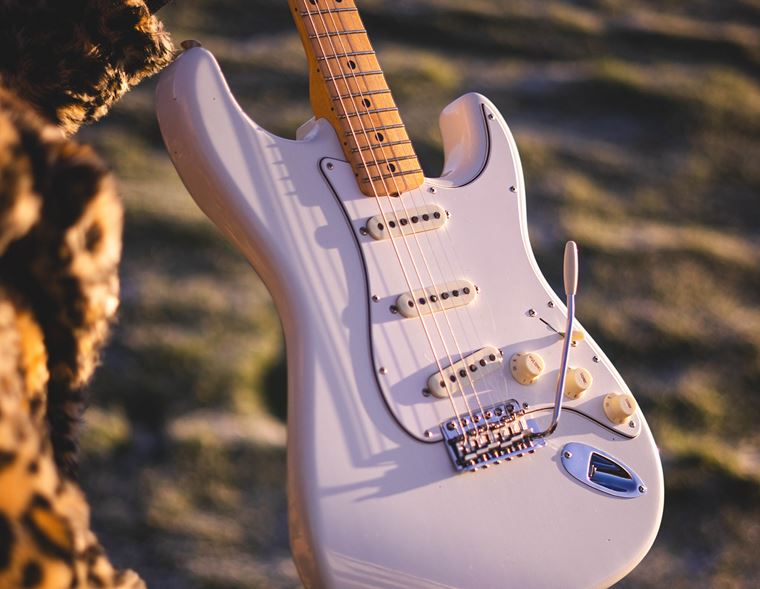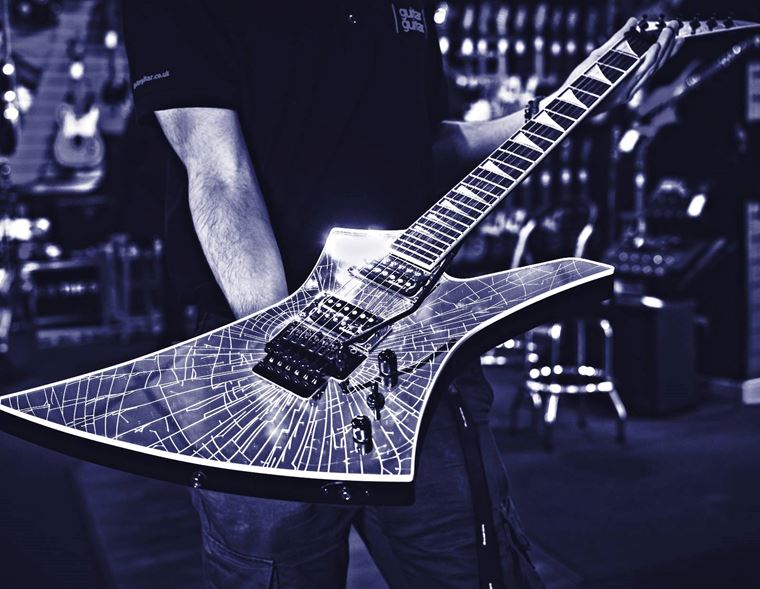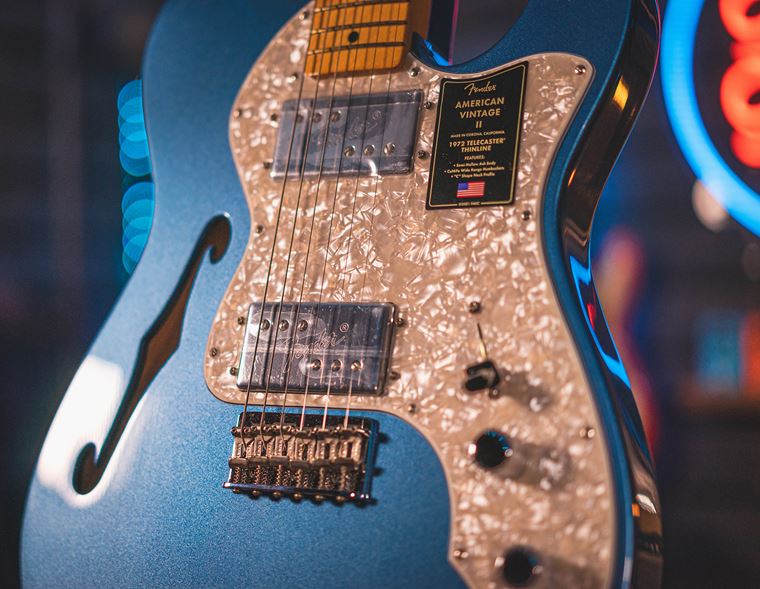'50s, '60s and '70s Fender Strats: What's The Difference?
Published on 21 February 2024
What is the difference between all of these Stratocasters that we see? On the surface of things, it looks like Fender put out a lot of very similar looking Strats, but as is often the case, the truth is a little less simple.
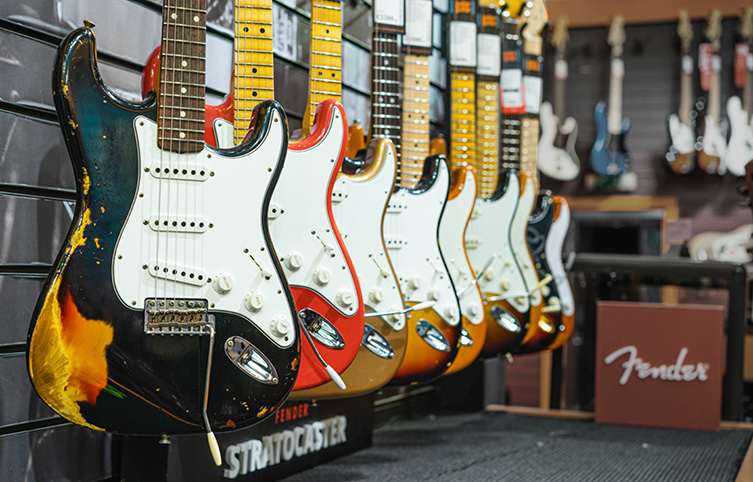
Now, there ARE a lot of Stratocasters out there, from the most retro of reissues to the more cutting edge of contemporary redrafts. All of them look similar from a distance, but as we zoom in, those smaller differences start adding up more and more.
Today, I’d like to focus on historical Strats. I want to highlight the differences between Stratocasters from the 1950s, the 1960s and the 1970s, and I’ll include reissue models in there as well, since those are the instruments that you and I are more likely to get our hands on!
There are distinctive things that make these guitars all relatively unique, and those elements will make a difference to you as a player, so it is worth knowing what’s what! As a long-time Stratocaster player, owner and seller, I have experience of handling and working with literally hundreds of different Strats, so this info is not theoretical, it’s from solid experience!
Contents
- What Isn’t Changing
- The 50s Strat - The Shock of the New
- The 60s Strat: Return of an Icon
- A Word on Pickups
- Back to the 60s Strat
- The 70s Strat: The CBS Years
- Be Specific, Be Discerning
What Isn’t Changing
Before I continue to those specific decades, it is probably worth outlining first what I won’t be addressing here. Firstly, I’m going to refer to only Strats with the classic three single coil pickup configuration, since Strats with humbuckers are almost their own separate subject. Also, I’m not going to go into finishes, because even though each decade had its own set of colours, those colours actually sometimes overlapped into different specs, and so it’s a little (unnecessarily) difficult to be exhaustively correct with them. I might to era-specific finishes but not in too much detail.
Apart from that, I’ll endeavour to cover all that separates these notable decades for the Stratocaster!
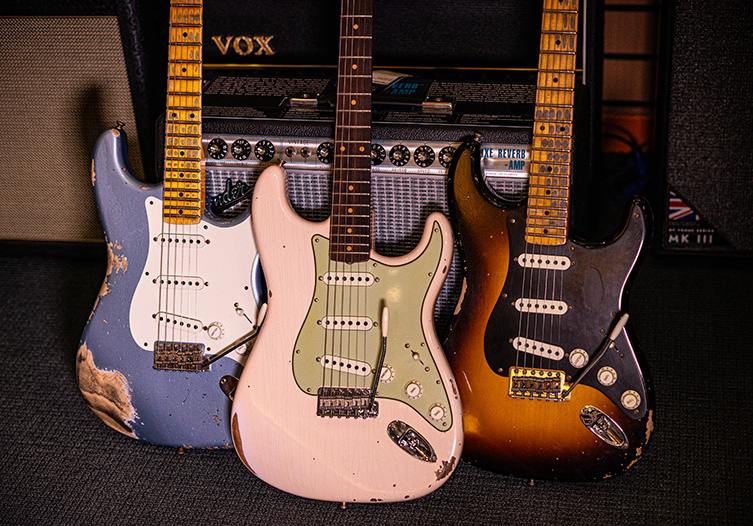
The 50s Strat - The Shock of the New
Let us begin at the beginning: 1954. America was all about surfboards, soda fountains and cars with tail fins. Into this glorious and somewhat hard-to-believe world came the Stratocaster, and the one you’d find in a store in the mid fifties actually isn’t too different from many Strats that you’d find hanging up on a wall at guitarguitar today.
The Fender Stratocaster was a pretty revolutionary object for its time. There was really nothing of its kind out there in the world: this was the furthest away from a ‘normal looking guitar’ (i.e. an acoustic or archtop) that there had ever been, and comparisons to spaceships were not too far off the mark for a 1950s audience. The double cutaway Stratocaster body with its extended top horn was a bit of a revelation, giving balance and upper fret access to players who’d never experienced such wonders.
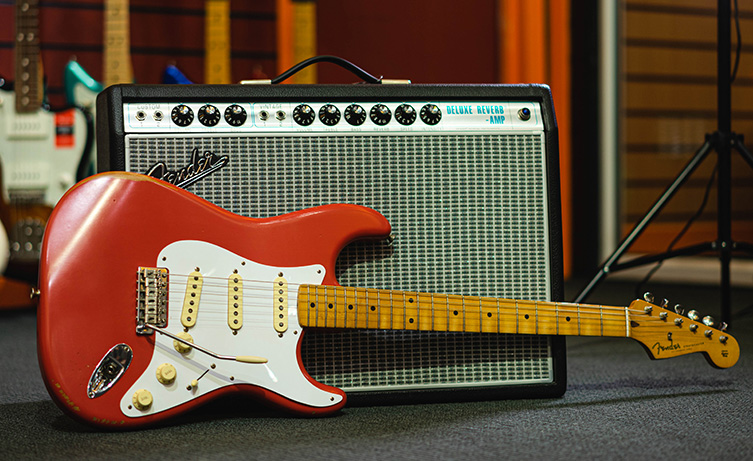
The famously modular nature of the Strat was there from the start, too. The bolted on neck could be taken off and replaced when required; the electronics were all mounted to a plastic guard that could be easily removed for access. The body was routed out from the front to further facilitate repairs and tinkering. This was a different universe to the guitars of only a year or two before.
Strats in the 50s had maple necks with maple fingerboards (almost always the same piece of timber), three alnico single coil pickups with relatively low output levels, a tremolo unit with six screws (more modern variants have two screws, or ‘two points’) and bodies made from Ash initially. In 1956, Alder was introduced for the bodies, though Ash was still used for certain finishes.
Talking about finishes, the default colour for Strats in 1954 was what we’d now call Two-Tone Sunburst’, a dark brown that transitioned into a lighter brownish gold. Other distinctive features included the famous ‘spaghetti’ headstock logo and a metal cover for the bridge, which was actually included with new Strats right up until the late 70s! Since they were purely cosmetic - and actually got in the way a bit - most players removed them and left them in their guitar cases forever. It’s interesting to note that Fender never seem to include these covers with their reissue Strats, even though they often do include similar covers with reissue bass models!
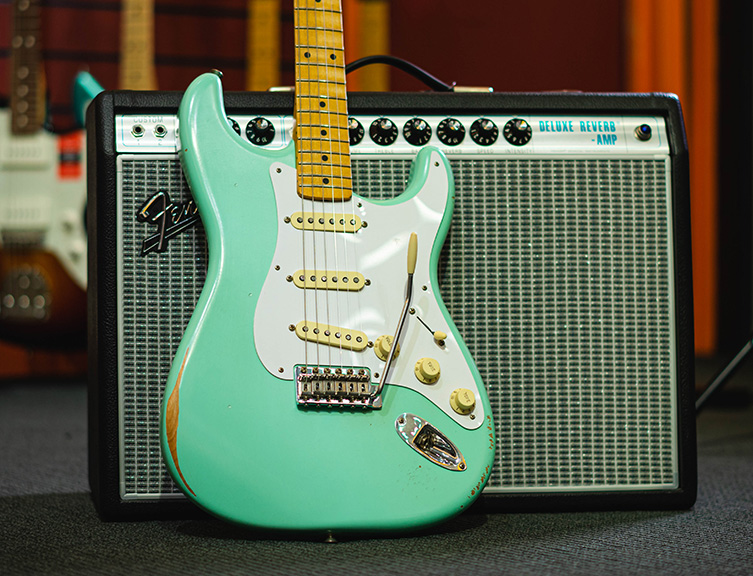
In 1957, Fender introduced a V-shaped neck profile and deepened some of the body contours. The V-neck is very much thought of as a 50s thing to us today, but it wasn’t immediate. This is perhaps why Fender tend to single out the 1957 Strat for their reissue models.
So, to summarise, here is a brief rundown of the main properties you’d expect to find in a 50s Stratocaster:
- Contoured ash body
- 21 fret maple neck with a V-profile
- 7.25” radius fingerboard
- Truss rod adjustment at heel (neck removal necessary)
- 3-way selector switch
- Spaghetti logo
- 6-screw tremolo
- Alnico 3 pickups with low number of winds/wraps
You'll find lots of 50's-referencing Custom Shop Strats, but also look to the Vintera II Strats and the American Vintage II 57 Strat.
The 60s Strat: Return of an Icon
When we in the industry talk about a ‘sixties Strat’, we are actually really talking about early to mid-sixties Strats. This is because Leo actually sold the entire Fender company to production company CBS in 1965, and lots of changes to the Strat appeared following that.

Perhaps the most immediate change was the introduction of a rosewood fingerboard, which actually happened in 1959! These early examples had ‘slab’ boards, which were a thick slice of Brazilian rosewood, until 1962 when a thinner veneer of rosewood was used instead.
In 1964, the logo changed a little, and Fender fans refer to this as the ‘transition’ logo since the company was sold to CBS not long after.
Two interesting observations for you: the fingerboards on these Strats - and indeed all Strats until 1982 - still had a curved 7.25” fingerboard radius. It’s seen as a relatively specific feature nowadays, but the truth is that all vintage ‘golden era’ Strats have this!
A Word on Pickups
The other observation is about the pickups. In our world full of reissues and retrofitted pickups, we tend to talk about Strat pickups from the sixties as being hotter than those from the 50s. This is somewhat true, but it depends on which years you zero in on and compare.
Here’s how it all pans out, as best as I can put together from various sources…
Strat pickups from 1954 had a low output due to having less winds and Formvar coated wire. These pickups typically would measure at around 5.4K Ohms. The number of winds actually increased over the subsequent years, so by 1963, the pickups sounded hotter. We’re talking around 6.4K Ohms of DC resistance, which of course indicates higher output. The lower the output, the more high end frequency response you get. More wraps of wire means higher output and therefore more mids and less high end.
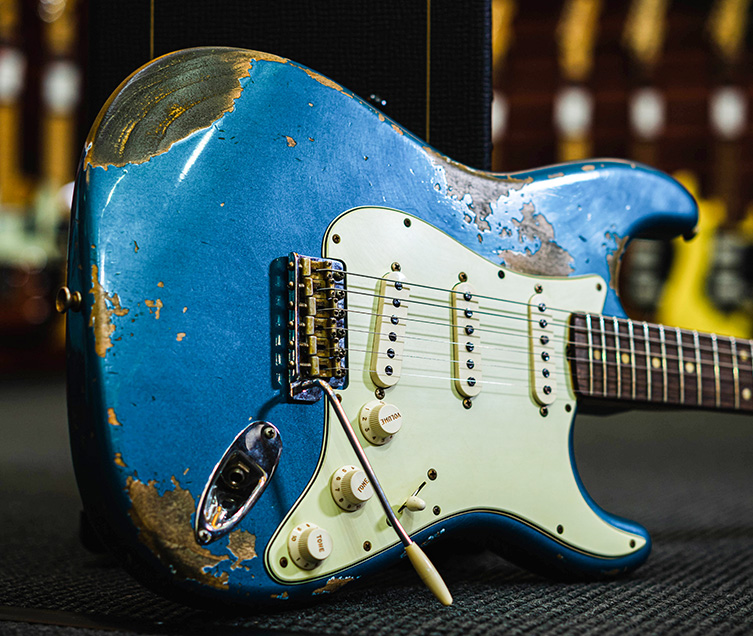
So, by 1963, the Strat sounded hotter and fatter, generally speaking. After this point, Fender actually started putting less winds into each pickup again, so the output went down somewhat. A change of magnet from alnico III to alnico V also altered the sound (alnico V is typically stronger and more midrange focused in terms of single coil pickups).
All of this means that yes, Strats from 1961 or 1962 definitely sounded bigger and hotter than those from 1954 or 1955, but the same isn’t necessarily true of a Strat from, say, 1964. Make sense?
Back to the 60s Strat
Okay, let’s pick things up with the 60s Strat. The CBS takeover in 1965 means that some of the things you might associate with 70s-era Strat happened during the 60s! I won’t get too trainspottery here but the larger headstock was around for the late years of the 60s, as was the ‘CBS’ headstock logo, which saw the black block lettering appear. This was apparently requested by CBS after Jimi Hendrix’s career went stellar: they wanted the logo - which was now everywhere - to be more visible on TV!
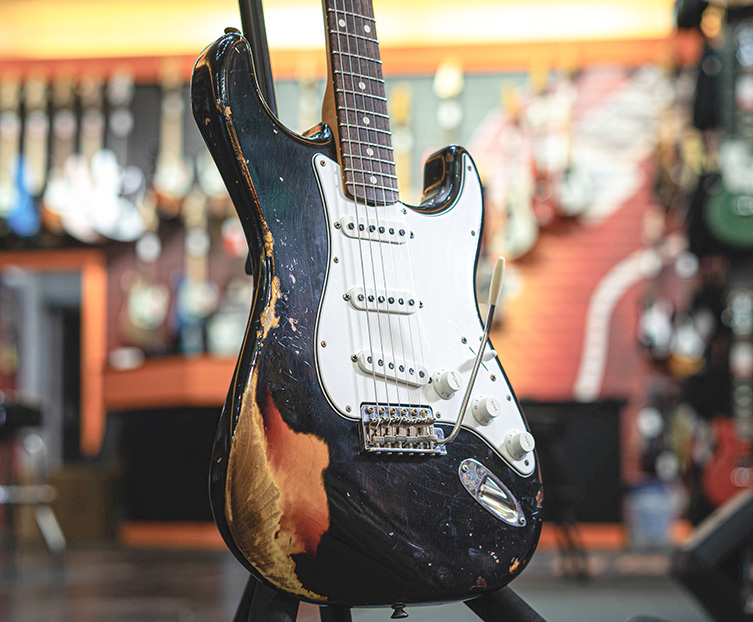
Let’s run down those specs just as we did before:
- Alder Body (occasionally Ash)
- 21 fret C-shaped neck
- 7.25” radius rosewood fingerboard
- Truss rod adjustment at heel of neck
- 3-way pickup selector switch
- ‘Transition’ or ‘CBS’ logo
- 6-screw tremolo
- Alnico 3 pickups (later 60s models using alnico 5) with more wraps/winds
The Vintera 60s Strat and American Vintage II 61 Strat models reflect many of these features.
The 70s Strat: The CBS Years
We finally move into the 70s, and we are firmly in the CBS-era for Strats. More Stratocasters are being made than ever before, and some fans hold the opinion that these guitars can be lesser instruments. Certainly, lots of elements changed, and we’ll look at those now.
Strats of this vintage all have the ‘big’ headstock, which has often been replicated over the years not only in reissues but in other lines such as the American Special and American Performer ranges. As stated earlier, CBS wanted people to see the guitar’s name more easily, so that extra timber in the headstock was dutifully filled by larger black block lettering. The larger headstock lasted until 1982, which sits just outside the scope of this blog.
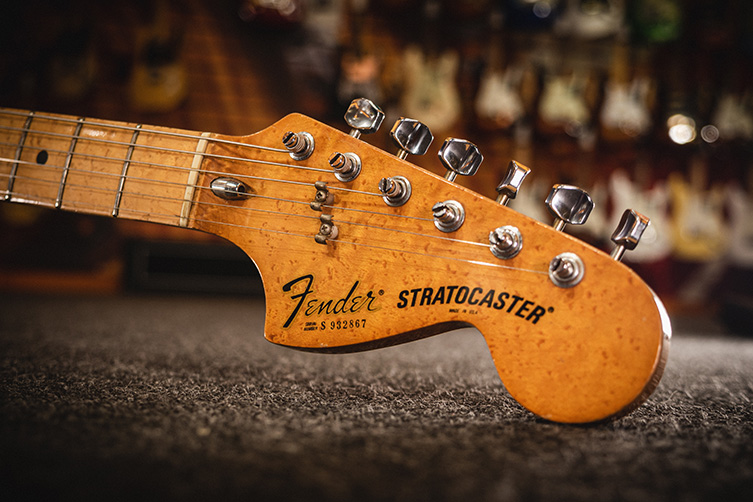
Other main details here relate to the neck and the switching. Firstly, Fender’s tried and true 4-bolt method for fixing necks to bodies was discarded in favour of a three bolt system that also incorporated a ‘micro tilt’ feature intended to alleviate the use of shims in the neck pocket that some players needed to get the feel just right.
A second big change was the introduction of the ‘Bullet’ truss rod, so-called because of the shape of the truss rod end that poked out the headstock! We see these features on reissue guitars to this day, but they don’t tend to be used aside from that.
Thirdly, and something that most definitely did get used afterwards, was the official addition of a 5-way selector switch. Players had long-since discovered the benefits of the ‘in-between’ tones achieved by wedging the 3-way selector betwixt settings. Third parties had begun to offer 5-way switches to retrofit to Strats, but 1977 saw Fender make it official and add them to their factory builds. This is how it has been ever since! You'll see lots of these features included on today's Vintera 70s Strat.
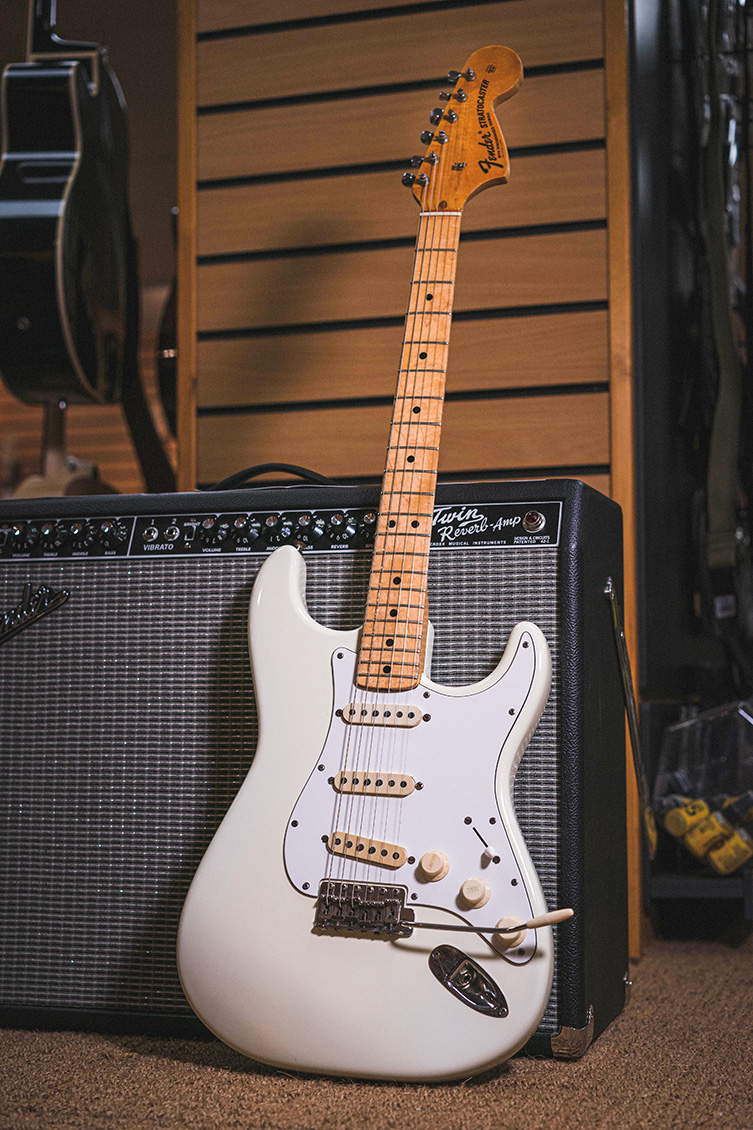
Minor changes? Yes, there were a few: the ‘belly cut’ contour became more pronounced, the finishes got thicker and some changes to the design of the pickups occurred (not necessarily for the better, most would say), but those were the main differences.
70s Fender Strats at a Glance:
- Alder bodies with thicker finishes
- 21 fret neck, C profile
- Large Headstock
- CBS logo
- 3-bolt neck join with Micro Tilt
- Bullet Truss Rod
- 7.25” radius fingerboard
Be Specific, Be Discerning
So, those are the main differentials between those glory decades of the 50s to the 70s.
As a long-time staff member at guitarguitar, I’ve been lucky enough to play a fairly wide variety of genuine vintage Fender guitars, from a 1960 slab board Strat to a ‘62 veneer, and a whole host of 70s Strats. The oft-maligned 70s Strats (there’s a reappraisal occurring to them these days, let’s remember) are actually no better or worse than vintage Strats from other eras: they have all felt so wildly different due to how they’ve aged and been looked after (or not looked after!) that it seems like a huge sweeping statement to say that ‘62 Strats are the best and those from the 70s are less good. Specific examples may well prove that to be the case, but they may just as easily dispel it.

There are great 70s Strats out there and there are some howlers, too. This is true of ‘62 Strats too, and every other supposedly special year, so don’t hold the opinions of others too highly: take the info shared in this blog and then base your findings on your own experience of playing these guitars, whether they are reissues or vintage originals.
For my tuppence’ worth, most of the reissue guitars I’ve played from Fender are - in my opinion - a good deal nicer to play and hear than full-on vintage guitars. Make of that what you will!




